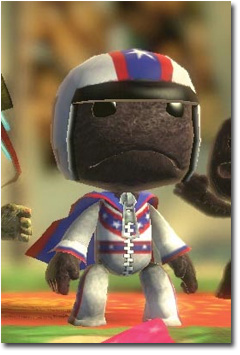 If there is one time this year to pickup a PlayStation 3, it’s going ot be on October 21st when Sackboy jumps onto the scene with Little Big Planet. You don’t have to be a casual gamer to have a desire to play Little Big Planet and we’re sure to see that in upcoming reviews.
If there is one time this year to pickup a PlayStation 3, it’s going ot be on October 21st when Sackboy jumps onto the scene with Little Big Planet. You don’t have to be a casual gamer to have a desire to play Little Big Planet and we’re sure to see that in upcoming reviews.
The question really comes down to, will Little Big Planet move consoles off the shelf? In theory, had the console been more reasonably price, you’d probably get a huge pop in sales. As it stands, you’re asking customers to spend above and beyond on a console just to play a 2D-Style platformer. No matter how fun the product is, and it will probably be fun in epic proportions, John Q. Public isn’t going to run out and drop large bills for the game.
Proof of that can be seen in the huge sales increase when Microsoft dropped their pricing structure. Gamers who were not current generation compatible ran out to pickup the console and the shelves went empty. No doubt Little Big Planet will move a few consoles, for those on the edge of PS3 readiness… but it won’t be long lived and it won’t be as epic as this title will.

 Much like Kameo: Elements of Power, Fable 2 ships without online co-op mode on day-one. However, Kameo didn’t promise the co-op mode prior to the games release, or talk about it in their presentations and hype machine conferences.
Much like Kameo: Elements of Power, Fable 2 ships without online co-op mode on day-one. However, Kameo didn’t promise the co-op mode prior to the games release, or talk about it in their presentations and hype machine conferences.
0 thoughts on “Little Big Planet – Release Date: October 21”